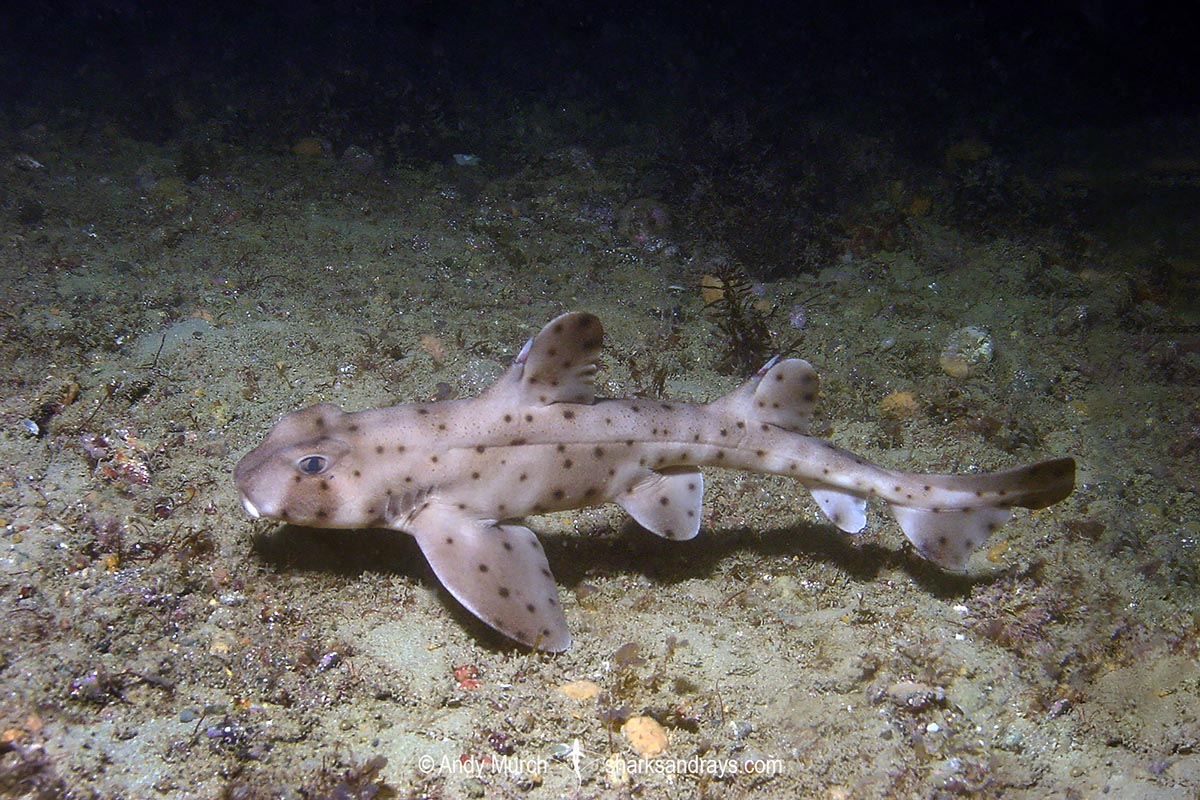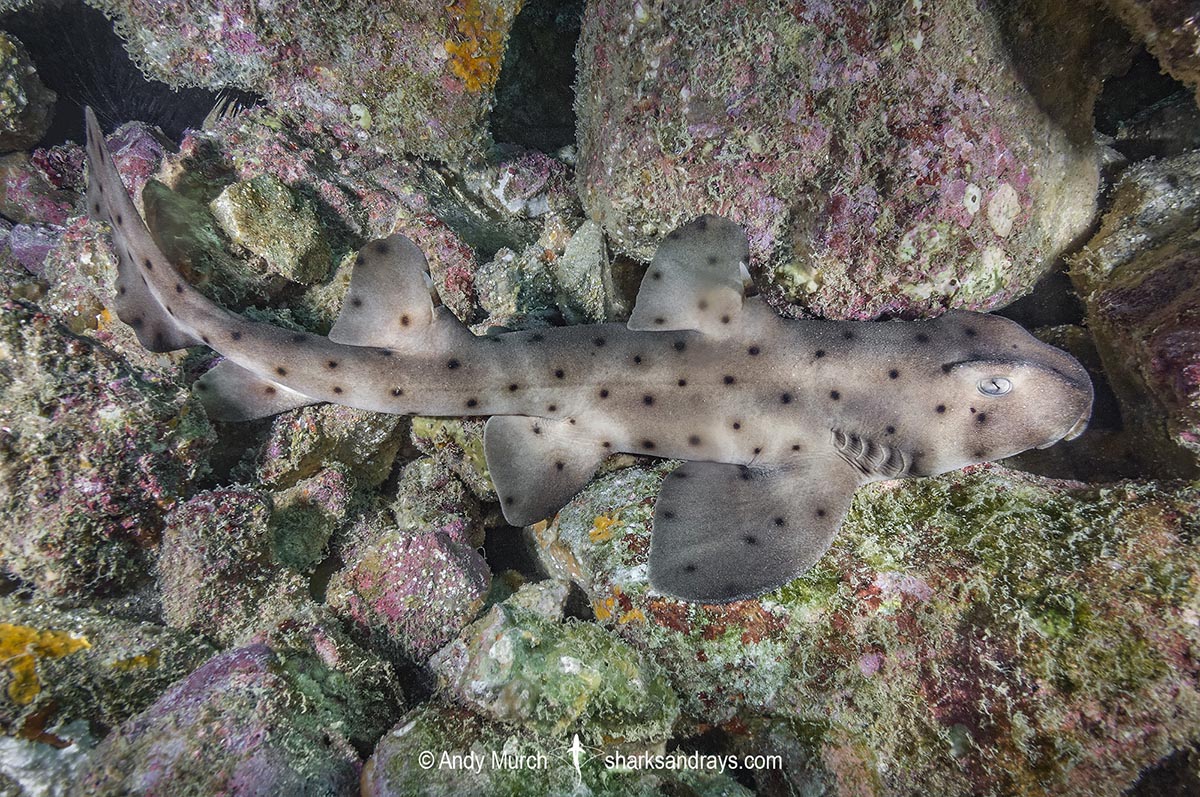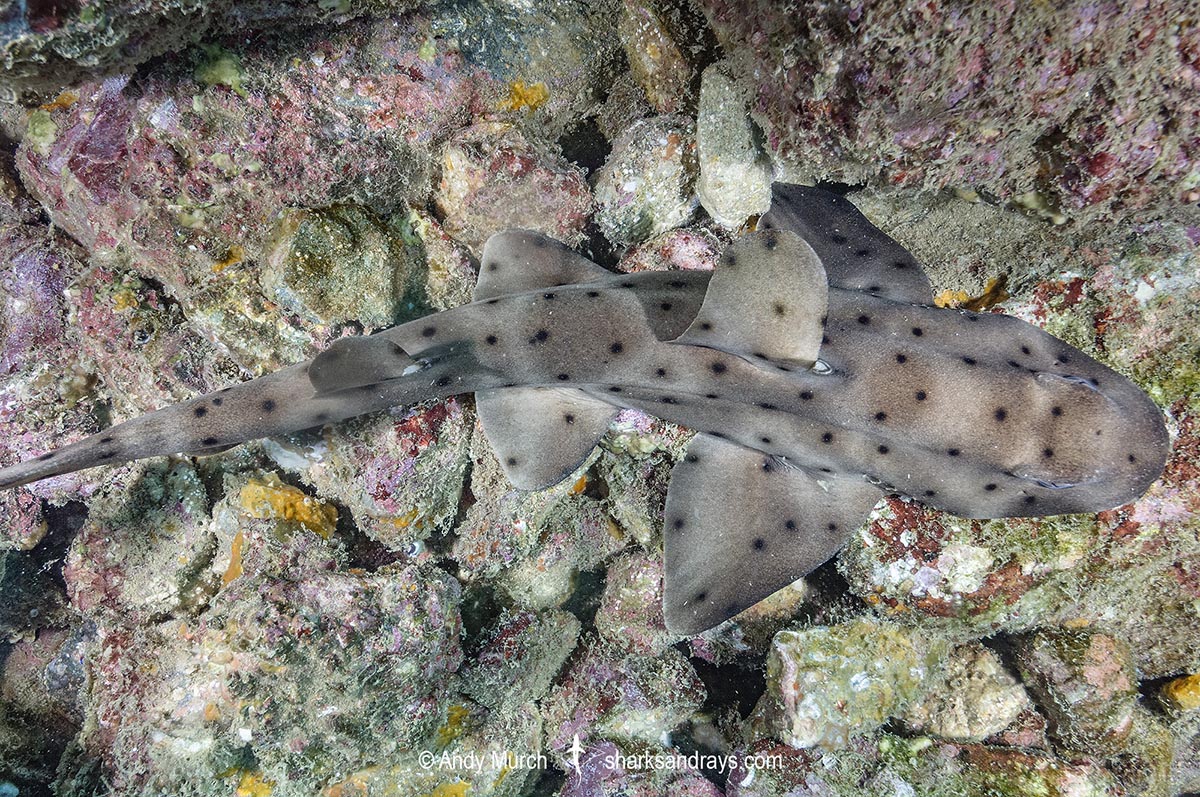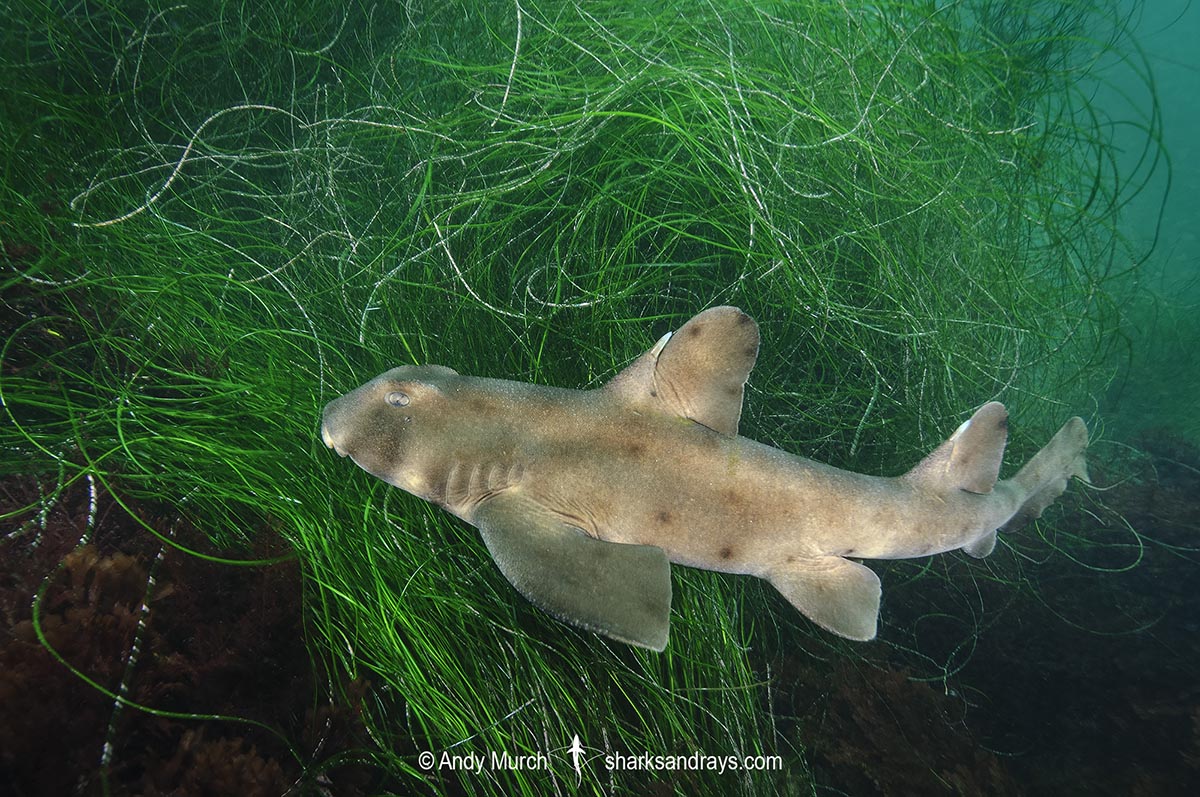Common names
Horn Shark, California Horn Shark, Pacific Horn Shark, Bullhead Shark.
Binomial
Heterodontus fransisci.
Synonyms
Cestracion francisci, Heterodontis francisci, Heterodontis francisi
Identification
Stout body. Large square head with prominent ridges above eyes. Two large dorsal fin, each with a spine at its origin. First dorsal fin origin anterior to pectoral fin insertion. Second dorsal fin origin level with pelvic fin free rear tip. Pectoral fins much larger than first dorsal. Pelvic fins about the same size as dorsal fins. High, short anal fin. Well developed caudal fin with square terminal lobe.
Dorsal coloration may be light brown, dark brown, or patches of both, with scattered small black spots. Spots may be absent on larger animals. Juveniles usually have more prominent light and dark areas and more spots.
Size
Maximum length 120cm. Size at birth 15-16cm.
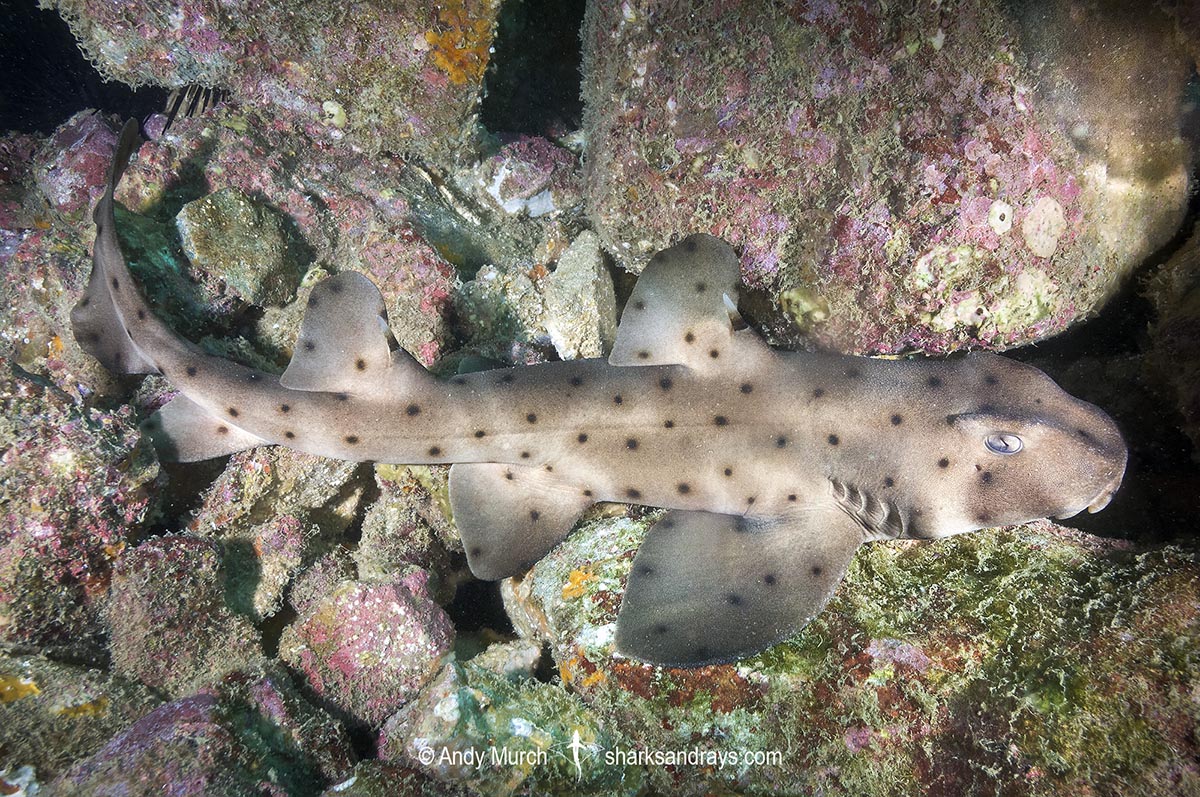
Conservation Status
DATA DEFICIENT
The horn shark (Heterodontus fransisci) population in California is probably stable. This species has no commercial value and is discarded when caught incidentally. Habitat degradation may be an issue.
In Mexico, bycatch is more common, but horn sharks have a high post-release survival rate.
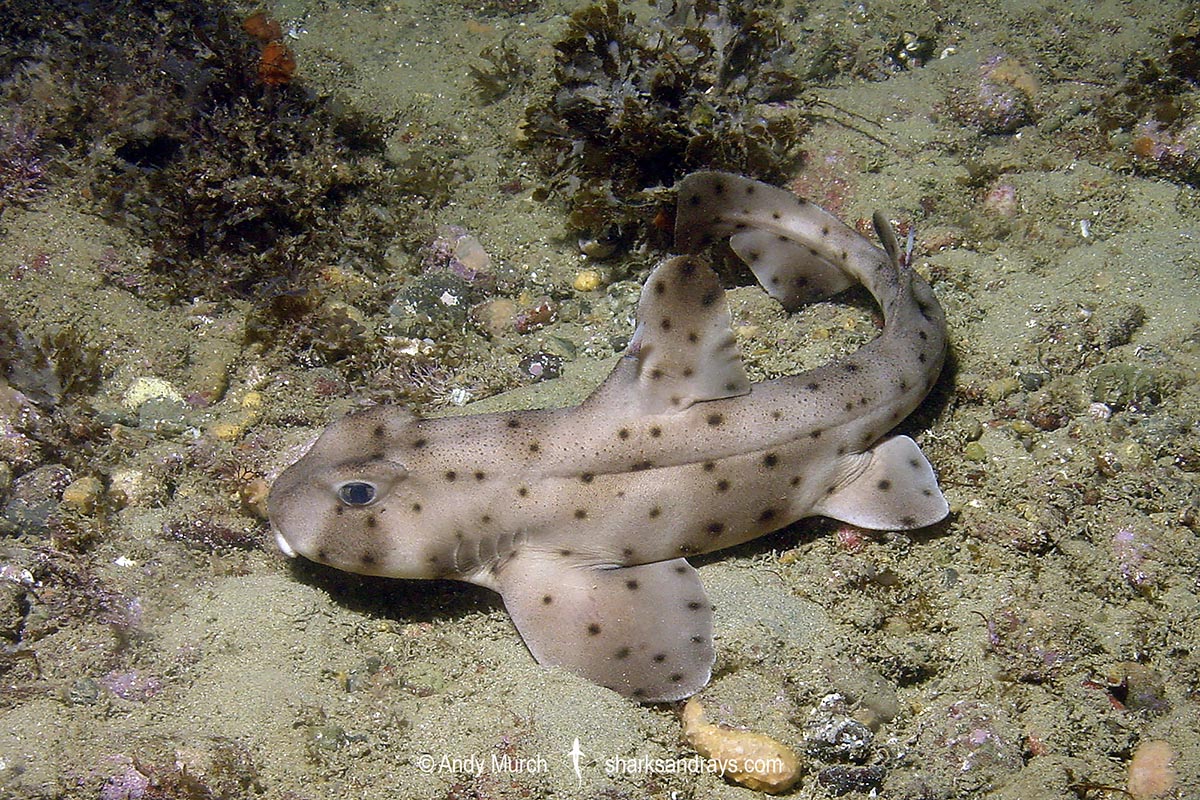
Habitat
Temperate seas. Present on rocky reefs and in kelp forests. From intertidal to at least 152m but often found in shallow bays in water less than 10m deep.
Distribution
The horn shark is found in the northeastern Pacific from San Francisco (in the summer) southward to the central Mexico including the Sea of Cortez.
Compagno suggested that the horn shark may also be present in South America but there is no evidence to support this. Any records of Heterodontus francisci from the southeastern Pacific are probably misidentifications of the closely related Galapagos bullhead shark.
Reproduction
Oviparous. Like other heterodontids, the horn shark lays auger shaped egg cases that measure roughly 12cm in length with a max. diameter of 6.4cm at the widest end. Although egg cases sometimes found laying on the sand, they are usually found securely screwed into tight crevices between rocks. Although their installation has not been witnessed, Port Jackson Sharks in Australia have been documented holding their egg cases in their mouths and rotating their bodies to literally screw the eggs into cracks. It is likely that the Californian horn shark uses a similar technique.
Diet
The horn shark’s diet consists of hard shelled crustaceans and molluscs that it crushes between plate-like molars. Juveniles often consume polychaete worms.
Behavior
Horn sharks are sluggish swimmers that rest during the day in deep crevices or under overhangs. Suspected of migrating seasonally into deep water.
Reaction to divers
Easy to approach, remaining completely motionless unless molested, at which point horn sharks usually retreat deeper into crevices or caves where possible.
Diving logistics
Quite easy to locate on shallow reefs in Southern California where it is most abundant.
La Jolla Cove is a well known shore dive north of San Diego where horn sharks are frequently sighted. If the swell is not too problematic, try searching for juveniles under rocks in the sea grass zone very close to the entry point. Adults tend to be in slightly deeper water e.g. around kelp holdfasts or under larger overhangs in 10-15m.
The beach in front of the commercial laundry near Avalon on Catalina Island is another great spot to see juvenile horn sharks at night. Each time I have been there, about a dozen small horn sharks have been sitting here and there in plain sight on the sand in about 8m of water.
What’s new
View our full list of updates
Similar species
Galapagos Bullhead Shark Distinguished by bolder light and dark pattern and larger, more closely spaced black spots. Southeastern Pacific.
Mexican Horn Shark Distinguished by lower brow ridges and pale bar between eyes in adults. Juveniles also have larger and fewer spots.

